Kate Forsyth's Blog, page 58
April 16, 2013
BOOK LIST: Best 25 Books Set in Italy
Today I've gathered together a list of what I consider the BEST 25 BOOKS SET IN ITALY:
(in alphabetical order)
1. The Wedding Officer – Anthony Capella
I loved this books so much! Its set in Sicily during the Second World War, and is all about food and love. It'll make you want to cook, I warn you!
[image error]
2. Four Seasons – Laurel Corona
A beautiful book about Vivaldi and the women musicians of the Pieta in Venice.
3. A Thousand Days in Venice - Marlena de Blasi
This is really a memoir and not a novel, but I really loved it and so wanted to include it. Another gorgeous book about love and food.
4. The Principessa – Christie Dickason
Set in the Italian city-state of La Spada, the gateway to Europe, this is an absolutely wonderful book of romance, palace intrigue, murder and fireworks.
5. The Birth of Venus – Sarah Dunant
I loved this book - its bold, passionate and brilliantly brings the world of Renaissance Italy to life.
[image error]
6. In the Company of the Courtesan - Sarah Dunant
One of my all time favourite books!
7. Sacred Hearts - Sarah Dunant
This one is set in a convent in Ferrara, Italy, in the year 1570 - I sat up till after 2am to finish it. An absolute zinger!
8. Leonardo’s Swans – Karen Essex
Set in Renaissance Italy, the book charts the lives, loves and marriages of two sisters. Isabella and Beatrice, and their relationship with Leonardo da Vinci. This is historical writing at its best, vivid, alive, crackling with sexual and political tension, and uncompromising in its reality.
9. The Glassblower of Murano – Marina Fiorato
This novel tells the parallel stories of a glassblower in Venice, 1681, and his descendant centuries later, a young woman who dreams of being a glassblowing artiste herself. It’s a simple, romantic story, but well told and with lots of lovely Venetian details.
[image error]
10. The Madonna of the Almonds - Marina Fiorato
A story of love, art, war and the story behind the making of the Amaretto di Saronna liquer - loved it!
[image error]
11. The Botticelli Secret - Marina Fiorato
A grand romp of an adventure through Renaissance Italy and Botticelli’s most famous painting, ‘La Primavera’, this was a great read (though you may need to willingly suspend your disbelief about quite a number of things). I loved it, though. The heroine Luciana is a delight, and the illumination of some of the possibly meanings behind the figures in the painting quite fascinating.
12. Daughter of Siena - Marina Fiorato
This lush historical novel set in 18th century Siena is a fabulous read, with a perfect blend of action, mystery and love.
13. The Venetian Contract - Marina Fiorato
Her latest book and just as good as all her others.
[image error]
E.M. Forster
14. A Room with a View- E.M. Forster
An old favourite of mine and one I like to re-read every few years. A beautiful, subtle love story set partly in Italy and partly in England, with a gentle satire on English manners and mores – a wonderful book.
15. Where Angels’ Fear to Tread – E.M. Forster
Not as well known as A Room with a View, but just as good - romance and misunderstandings among English ex-pats in a small Italian village
16. Bitter Greens – Kate Forsyth
Well, I had to include myself in my list of favourite books set in Italy! Most of Bitter Greens is set in Renaissance Venice and on Lake Garda, the longest and deepest and most strikingly beautiful lake in Italy (with the most amazing old Rapunzel-like towers on its shores)
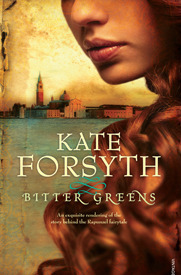
17. Juliet – Anne Fortier
A brilliant read! I really recommend it. This book tells the story of the original Juliet of Shakespearean fame, in parallel with the modern-day quest of a young American woman to find an ancient family legacy. I love books which parallel two historical periods, particularly when it is done as well as this one.
18. The Confessions of Catherine de Medici – C.W. Gortner
An absolutely fabulous historical novel told from the point of view of Catherine de Medici, one of the most maligned women in history. The parts dealing with her childhood are set in Italy; the rest in France.
19. The Falconer’s Knot – Mary Hoffman
‘A tale of poison, bloodshed and passion’ ... a fabulous book, and one I can highly recommend.
20. I, Mona Lisa – Jeanne Kalogridis
This was the first book I have read by Jeanne Kalogridas and it won't be the last. I really enjoyed this book, which tells the story of the woman behind Leonardo da Vinci's most famous painting. So little was known about Lisa Gherardini, Kalogridas was able to position her right in the heart of the intrigues, murders, and religious fanaticism of Florence in the days of Savaronola. A really good, exciting, romantic book.
21. The Borgia Bride - Jeanne Kalogridis
The tagline for this book reads ‘Incest. Poison. Betrayal. Three wedding presents for the Borgia Bride.’ This sums up the book really well. It’s a real historical page turner, set in Italy in the 1490s when the Borgia family ruled Rome. Riveting stuff.
22. The Book of Unholy Mischief – Elle Newmark
An utterly fabulous read! Set in 15th century Venice, with a boy who seeks to protect an ancient book that holds the secret to unimaginable power. Lots of intrigue, drama, danger and cooking.
[image error]
23. Vivaldi’s Virgins – Barbara Quick
Another wonderful book about Vivaldi and the girl musicians of the Pieta in Venice - full of atmosphere and beauty.
24. Miss Garnet’s Angel – Salley Vickers
This novel tells the story of a prim and proper Englishwoman who goes to Venice and finds her life transformed by the power of art and love. It made me want to move to Venice!
25. The Passion of Artemisia – Susan Vreeland
A novel inspired by the life of Artemisia Gentileschi, one of the few women to ever be admitted into the salons of Renaissance Florence. Read my Interview with Susan Vreeland for more.
[image error]
If you enjoyed this post, you may also enjoy my post on BEST BOOKS SET IN FRANCE or BEST FAIRY TALE STUDIES
Please leave a comment, I love to know what you think.
April 14, 2013
BOOK REVIEW: 'Madonna of the Almonds' by Marina Fiorato
[image error]
Title: The Madonna of the Almonds
Author: by Marina Fiorato
Publisher: Beautiful Books
Age Group & Genre: Historical Fiction for Adults
The Blurb:
Bernardino Luini, favourite apprentice of Leonardo da Vinci, is commissioned to paint a religious fresco in the hills of Lombardy. His eye is caught by the beautiful Simonetta di Saronno, a young noblewoman who has lost her husband to battle. This title tells a story of love and art set against the backdrop of the Italian Wars. (From Goodreads)
What I Thought:
What a beautiful book this is! It has everything I love most in fiction – romance, suspense, danger, art, an Italian setting, a fascinating historical time brought vividly to life, and the story behind the creation of something real (in this case, the delicious liqueur made from almonds, Amaretto di Saronno).
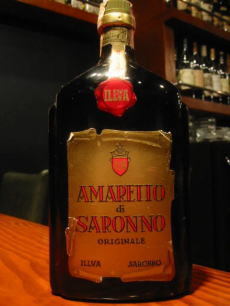
I had read a few of Marina Fiorato’s earlier books, and enjoyed them all, but this book feels really special to me. The interweaving plot was so cleverly done, and I felt strongly for all the characters and kept hoping that - against all odds – things would turn out well for them.
Simonetta di Saronno is a young widow, her husband killed in the wars.
Bernardino Luini is a brash young apprentice to Leonardo da Vinci, longing to break free of the studio and do his own paintings. When he first sees Simonetta, he knows he must paint her.
His pursuit of her – artistically and romantically – leads to all sorts of trouble for them both.
Then there is a second, parallel romantic story.
Amaria is an orphan being raised by a kind woman she calls Nonna.
One day she finds a wild man living rough in the woods. When she tells Nonna, the old woman goes and finds the filthy young man –suffering from some kind of amnesia – and takes him into her own home. The two women care for him and nurse him back to health. Inevitably Amaria and the wild man fall in love, but his past is full of secrets that threaten to destroy not only their happiness, but also that of the young painter and his muse living in Saronno.
Their stories slowly entwine, building to a high pitch of suspense, as religious mania, war, and poverty combine to drive the heroes and heroines to desperate acts.
I loved it! An utterly captivating historical novel of love, war and art.
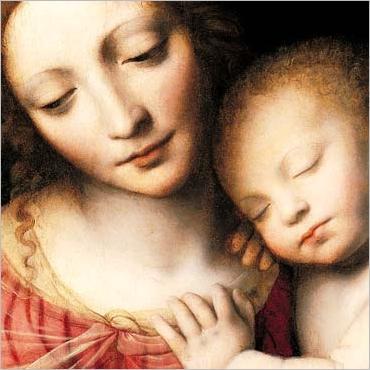
painting of 'Christ Child Asleep' by Bernardino Luigi
April 13, 2013
WRITING ADVICE - Be Brave!
VINTAGE POST: from March 2012
The best advice I can give anyone wanting to be an author is - BE BRAVE.
You need courage to even begin writing. Deciding to put your thoughts and feelings down on paper, and then to show them to someone else is incredibly hard.
Having the courage to devote a year or two or even longer to working on a manuscript without knowing if it’ll ever be published is an ordeal too. People will ask you, ‘How’s the novel going? Found a publisher yet?’ it’s hard for your courage to remain unshaken.
Then you need to be bold and audacious and playful in your actual writing. So many aspiring authors write tame and conventional prose because they think it will help them get published. I think this is a mistake. Don’t be afraid to let loose some fireworks in your writing.
Many writers tend to sidestep the dangerous scenes too. They worry about what their mum will think, or their partner, or their old school friends. You can’t ever worry about what other people may think. There will always be people who like what you do, and people who don’t. Your only job is to serve the story well.
So often, when you feel that sense of danger in your writing, that’s when you know you’re really writing well.
Finally, once you’ve finished your manuscript you need the courage to send it out, to try and get published. I was shaking uncontrollably the first time I sent my manuscript out. I felt sick to my stomach. And yes, I was rejected. Quite a few times. But I conquered my fear of rejection and was eventually published.
And here I am today, facing yet another new fear. I have a new book coming out in three weeks time. What if no-one likes it? What if it doesn’t sell? What if I’m ripped to pieces by an unsympathetic critic? What will my mum think about some of the darker or saucier scenes in the book?
Trust me, I need all the courage I can muster to face that particular fear.

April 12, 2013
BITTER GREENS: some recipes from the feasts described in 'Bitter Greens'
My books are filled with feasts.
From larks’ tongue pies to gypsy stew, the food in my books is always carefully researched and vividly described. Part of my research always involves cooking, as far as possible, the meals I describe. (Larks’ tongue pie was a little difficult to achieve, I must admit).
My most recent book 'Bitter Greens' has a feast scene set in the Chateau de Cazeneuve in Gascony, in which the baroness of the chateau rather reluctantly puts on a meal for the Sun King, Louis XIV, and his corrupt and decadent court.
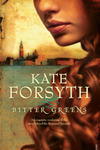
Gascony is located east and south of Bordeaux, and is a beautiful, rolling, green landscape of orchards and vineyards and tumbledown chateaux, with the snow-capped Pyrenees floating high on the horizon.
It is famous for its duck dishes – there are far more ducks than people in Gascony – creating the most delicious foie gras, confit and rillettes. Gascony is also the land of the cassoulet, a hearty peasant dish made with duck, sausage and white beans. Pigs hunt for truffles in the forest, and in spring the chestnut trees are in glorious flower along every road.
[image error]
Its other most famous invention is the delicious and heady Armagnac brandy.
I tried my hand at a few of the more famous Gascon dishes, with the most delicious results. Here are my favourites:
Chestnut soup (Soupe aux Chataignes)
Soupe aux Chataignes is a very popular Gascon soup due to the abundance of sweet chestnuts which are grown here.
The primary problem of cooking with chestnuts is peeling them. The old-fashioned way is to score the chestnuts with a knife then bring to the boil in a large pan and simmer for about 10 mins, drain a few at a time and peel off the inner and outer skins while still hot.
I find it easier to boil a few days in advance and leave– the skins seem easy to remove then.
Easier still, buy a can of chestnut pureé from your best local delicatessen (cheating, I know, but infinitely easier).
Serves 6
1 kg of peeled chestnuts or can of chestnut pureé
whites of 4 leeks, washed and chopped
55g of butter
3 potatoes peeled and chopped
4 carrots peeled and chopped
3 tablespoons of crème fraiche
salt and pepper
thin slices of French bread, brushed with oil and toasted
Melt your butter in a large pan with a lid, add leeks and sweat gently for 10 minutes. Add the rest of the vegetables and chestnuts, 2 litres of water and salt and pepper, then bring to the boil. Cover and simmer for 45 mins.
Pureé with a blender and season to taste, stir in the crème fraiche, add the French bread and serve.
[image error]
Gascon Cassoulet with Duck Confit and White Beans
I travelled to Gascony with my three children, and spent a week staying near Saint-Émilion. We ate this cassoulet in a tiny stone cafe overlooking the Romanesque church, on a chilly spring evening. I’ve done my best to recreate the dish at home
Serves 4
5 tablespoons extra-virgin olive oil
250g pancetta, diced
1 medium onion, cut coarsely
1 pound dried flageolets or Great Northern beans, rinsed and picked over, then soaked for 2 hours and drained
4 fresh thyme sprigs from the garden
2 litre chicken stock
1 large garlic, broken into cloves and peeled
salt to taste
4 pieces of duck leg confit, trimmed of excess fat
½ kg of French sausage – duck, pork, garlic – whatever you can get - sliced crosswise
100g bacon, cut into cubes
2 cups coarse fresh bread crumbs
2 tablespoons chopped parsley
In a large saucepan, heat 3 tablespoons of the olive oil. Add the pancetta and cook over moderate heat until the fat has been rendered, about 5 minutes. Add the onion and cook, stirring occasionally, until softened, about 7 minutes. Add the beans, thyme sprigs and stock and bring to a boil. Simmer over low heat, stirring and skimming occasionally, until the beans are al dente, about 1 hour.
Add the garlic cloves to the beans and simmer until the garlic and beans are tender, about 15 minutes. Discard the thyme sprigs. Season the beans with salt and let cool to room temperature. Cover and refrigerate the saucepan overnight.
Preheat the oven to 180°C. Rewarm the beans over moderate heat. Transfer the beans to a large, deep baking dish. Nestle the duck legs, sausage and bacon into the beans. Bake for about 40 minutes, until the cassoulet is bubbling and all of the meats are hot. Remove from the oven and let rest for 15 minutes.
In a skillet, heat the remaining 2 tablespoons of olive oil. Add the bread crumbs and cook over moderately high heat, stirring, until browned and crisp, about 3 minutes. Sprinkle the bread crumbs and the parsley over the cassoulet and serve.
[image error]
Apple and Armagnac Croustade (Croustade à l’Armagnac aux Pommes)
This looks and tastes amazing! It’s a little fiddly to make, but well worth the effort.
around 10 tablespoons butter
6-8 large apples, peeled, cored and sliced as thin as you can
1 vanilla bean
1/4 cup sugar
1/3 cup Armagnac (use brandy or Calvados if you can’t find it)
8 sheets filo dough
1/2 cup caster sugar (or more, as needed)
1/3 cup sliced almonds, divided
For this recipe, I like to use a soft-sided silicon cake pan so you can remove the cake more easily. Spray with cooking oil.
Melt 4 tablespoons of butter in a large skillet over medium heat. Place the apple slices in a bowl. Cut the vanilla bean lengthwise in half and, using the tip of a small knife, scrape the seeds over the apples and drop the pod on top. When the butter is foamy, add the apples with the vanilla and the sugar and cook, stirring very gently but frequently, until the apples are soft and caramelized, about 20 minutes. Transfer the apples to a bowl and allow them to cool to room temperature.
Heat oven to 180°C. Melt the remaining 6 tablespoons butter and set it aside.
Unfold the filo dough on your work surface and cover it with a damp towel.
Remove the top sheet of filo (re-cover the remaining sheets), brush it lightly with butter, and dust it with sugar. Gently and loosely crumple the dough into a circle and lay it into the cake pan. Sprinkle it with about one-fifth of the almonds. Repeat this procedure three more times, until you have four buttered, sugared and almond-sprinkled sheets of filo lightly layered in the cake pan.
Spoon the apples into the centre of the croustade, leaving a border of a few centimetres depth. Working as you did before, butter, sugar and crumple a sheet of filo, fitting it over the apples. Sprinkle this layer with the remaining almonds, and cover this with another crumpled sheet of buttered and sugared filo. Do a little styling and draping; arrange the filo so it looks good.
Slide the croustade into the oven and bake for about 10 to 12 minutes, watching the top of the tart carefully to make certain it doesn't brown too much. The top should be just lightly browned. Remove the croustade from the oven.
Increase the oven temperature to 200°C. Butter and sugar another sheet of filo, loosely crumple it and place it on the last layer to make a light, airy crown. Bake the croustade for 5 to 10 minutes, or until lightly browned, then remove it from the oven again.
Butter the last sheet of filo and, once again, crumple it to make a crown. Place it on top of the croustade and dust it heavily with the remaining powdered sugar. Return the tart to the oven and bake until the top layer caramelizes evenly, about 5 to 10 minutes. Check the progress of the sugar frequently because it can go from brown to burned in a flash.
Other blogs about Bitter Greens that may interest you:
BITTER GREENS: The story of my fascination with Rapunzel
BITTER GREENS: The Facts Behind the Fiction of the Music in the book
This blog originally appeared on Sophie Masson's wonderful blog A La Mode Frangourou
April 11, 2013
BITTER GREENS: The Facts behind the Fiction of Charlotte-Rose de la Force's life
BITTER GREENS is, of course, a work of imagination.
However, in weaving a tale of fancy I have used as the immovable pegs the known facts of Charlotte-Rose de la Force’s life, few as they are.
Even the year of her birth is open to argument, ranging from 1650 to 1654. I travelled to Château de Cazeneuve in Gascony and, with the help of her baptismal records, was able to confirm it as the earlier date. I also saw her baby pram and the simple white family chapel where she was baptised.[image error]
Chateau de Cazeneuve, in Gascony, France
Of her childhood, we know only that she met King Louis XIV in 1660 at the Château de Cazeneuve, and that two years later her mother was imprisoned against her will in a convent in Bordeaux.
Charlotte-Rose went to court at the age of sixteen, and was maid-of-honour first to the queen and later to the Duchess of Guise.
She had an affair with Moliere’s protégé, the actor Michel Baron, who notoriously left his nightcap in her bedroom one night.
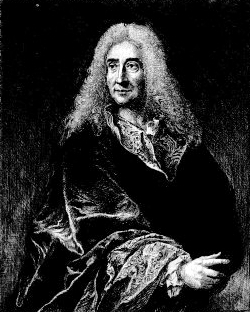
Michel Baron, the 17th century French playright
Later, Charlotte-Rose was engaged to the Marquis de Nesle, the betrothal ending in scandal after a pouch she had given him was found to have toads’ feet and spells in it. As a result, Mme de la Force “came to the attention” of the King during the infamous Affair of the Poisons.
Her love affair with the much younger Charles de Briou caused more scandal, particularly after she dressed up as a dancing bear to gain access to him. They wed, but their marriage was annulled in the courts.
In 1697, she was banished to the abbey of Gercy-en-Brie after writing some satirical Christmas verses and under suspicion of having an affair with the Dauphin.
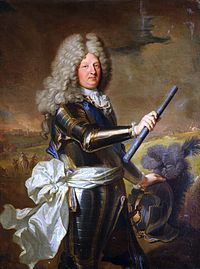
She wrote ‘Persinette’ and various other fairy tales while imprisoned there, publishing them anonymously the following year.
The mystery of how Charlotte-Rose de la Force came to know of Giambattista Basile’s fairytale ‘Petrosinella’ may have been solved in 2007 by the fairytale scholar Professor Susanna Magnanini. She conjectures, in ‘Postulated Routes from Naples to Paris: The Printer Antonio Bulifon and Giambattista Basile’s Fairy Tales in Seventeenth Century France’, that a copy of his fairytale collection may have been brought to Paris around the time of the explosion of literary fairytales by French writers Charles Perrault, Charlotte-Rose de la Force, Marie-Jeanne L’Héritier and others. If so, these French storytellers would have had to have read Basile in his original Neapolitan dialect, which is strikingly different to both Latin and Italian.
The story ‘La Puissance d’Amour’, told by Charlotte-Rose in the novel on the night she first meets Charles de Briou, is a paraphrasing of one of her actual fairytales, which has never before been translated into English.
Similarly, ‘Bearskin’, the story about a princes turned into a she-bear, is one of Henriette-Julie d’Murat’s most famous fairytales, and she was indeed a cousin of Charlotte-Rose de la Force.
I first heard about Charlotte-Rose de la Force in an essay by Terri Windling, 'Rapunzel, Rapunzel, Let Down Your Hair', in Endicott Stduio's Spring 2006 Journal of Mythic Arts. This was the first seed that led me on my journey to discovering the life of this extraordinary writer.
http://www.endicott-studio.com/rdrm/rrRapunzel.html
My primary source for the facts of Charlotte-Rose's life come from "Mademoiselle de la Force: auteur mèconnu du XVIIͨ siècle", by the French academic Michel Souloumiac, which I had translated into English, again for the first time. My secondary source was "Letters from Liselotte: the collected letters of Elisabeth Charlotte, Princess Palatine and Duchess of Orléans, 'Madame', 1652-1722", in which she recorded the gossip of the Sun King's court. Charlotte-Rose is mentioned a number of times.
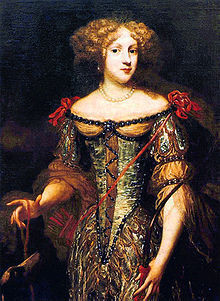
Researching and writing the life of Charlotte-Rose de la Force was like assembling and putting together a gigantic jigsaw - it required patience, dedication and persistence. I feel, however, that I have discovered one of the most fascianting women ever forgotten by history.
April 10, 2013
BITTER GREENS: The Facts behind the Fiction of the Music
Music is a key motif in BITTER GREENS, from the use of musical notations to name each section of the book, to the staging of the opera at the end of the book, in which my 'Maiden in the Tower' character, Margherita, sings.
I thought you might be interested to know what is true in the musical references in the novel:
The Ospedale della Pietà in Venice really did take in abandoned girls and train them to be extraordinary singers and musicians.
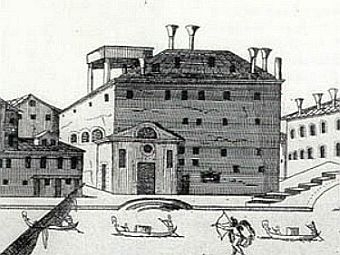
Young boys in Renaissance Italy were sometimes castrated against their will to preserve their soprano voices.
Jean-Baptisete Lully, the court composer for Louis XIV, really did die after banging his toe with his staff while conducting a Te Deum in honour of the king's recovery from illness. The wound turned gangrenous, but Lully refused to have his toe amputated and the gangrene spread, resulting in his death on 22 March 1687.
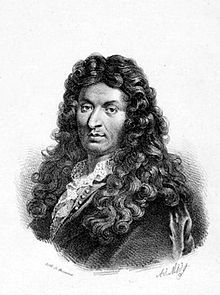
Jean-Baptiste Lully, the court composer at Versailles
The first opera to ever be performed really was ‘Euridice’, written by Jacopo Peri and performed in Florence in October 1660 to celebrate the forthcoming marriage of Henri IV of France and Maria de Medici. One of the castrato who sang in that opera was named Giovanni Magli, but as far as I know he was never bodyguard to a witch.

The interior of the Pitti Palace in Florence
April 9, 2013
BOOKS I READ IN MARCH
These are the books I read:
1 The Venetian Contract – Marina Fiorato
I loved this book so much! Fabulous historical novel with romance, intrigue and adventure in one heady brew. Marina Fiorato is fast becoming one of my favorite authors (look out for a review & interview with her next week!)
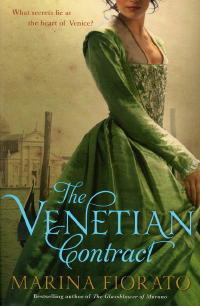
2. Finnikin of the Rock – Melina Marchetta
I was really impressed with Melina Marchetta's first epic fantasy novel. Better known for her contemporary social realist novels for young adults, Melina made a bold move switching to fantasy. Her plot is cleverly built and well-handled, the pace never flags, and her characters are all intriguing and believable. Well worth the read!
3. The Three Loves of Persimmon – Cassandra Golds
Cassandra Golds is one of the most bewitching and original writers Australia has ever produced. Her novels are fables about love, hope, and faith, and unlike anything else being written by any other writer I know (except perhaps Kate di Camillo, whose work I also love). Her books are all utter treasures, and 'The Three Loves of Persimmon' is no exception. Look out for an interview with Cassandra, coming soon!

4 An Uncertain Place – Fred Vargas
An intriguing murder mystery with a shambling, slow-thinking and slow-moving Parisian detective. These books are translated from the French, which adds to their charm. I found it a little slow, but I loved the settings and the characters were all quite unique.
5 Nine Days – Toni Jordan
What a beautifully written little masterpiece of a novel! I loved it. Once again, I'll post a longer review and an interview in the next few weeks.
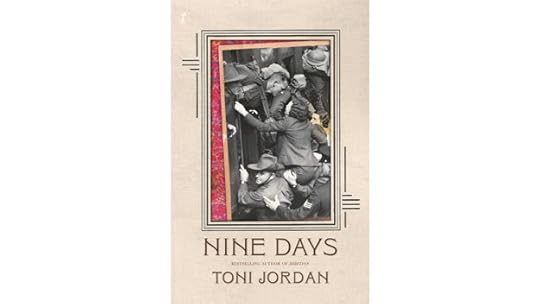
6. When Maidens Mourn – C.S. Harris
This is the latest in a series of murder mysteries set in England during Regency times. Think the dark underbelly of a Georgette Heyer romance novel. The amateur detective is a Viscount with a troubled past - his suffragette wife is a delight and my favourite character in the books.
7. The Somnambulist – Essie Fox
An intriguing and unusual book set during Victorian times, with the feel of a Victorian melodrama. The historical setting is superbly well done, with a rather creepy foggy atmosphere, and more twists and turns than a roller-coaster ride.
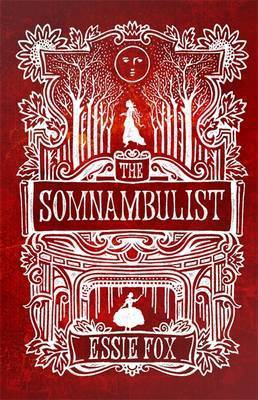
8. The Last Templar - Michael Jecks
A very enjoyable medieval murder mystery, with an appealing hero and a puzzling mystery. I'll be trying another of these.
9. On the Way to the Wedding – Julia Quinn
Frothy and funny as ever.
WRITING ADVICE: The Three Ts of Writing
When I’m teaching creative writing, I often describe what I call ‘The Three Ts of Writing’.
The first of these is TALENT – and I believe this is something you are born with. It manifests itself in a love of books and words and language, a strong and vivid imagination, a desire to transcribe the fleeting moment.
The second is TECHNIQUE. Writing is a craft, and like sculpture or music or carpentry, it can be taught. A writer’s toolbox includes spelling, grammar, syntax, story structure, knowledge of genre, an understanding of the balance of the three narrative functions. A writer can be taught how to craft strong and supple sentences, how to build tension, and how to create characters that will never be forgotten. Lots and lots of writers have an abundance of raw talent, but unlike sculptors or musicians or carpenters, they think that’s enough. It’s not. Writers must learn their craft if they wish to stand out in a crowded and competitive market-place.

Calvin and Hobbes 'On Writing'
Luckily there are lots of books on writing, and lots of writing courses that can help you hone your craft. The other advantage of writing courses or workshops is that you can meet other people who share your obsession with what can be a very lonely occupation. No many people I know – apart from other writers – can have a passionate discussion about Plot Holes and how to fill them, or argue about the necessity of the Midpoint Reversal. And of course, it’s always wonderful to have somebody else look at your work with a clear and compassionate eye, and put their finger on exactly what is wrong with your manuscript when you’ve been bothered about it for months.
The third is TENACITY. It takes a certain kind of stubbornness to labour over the writing of a novel for a year, or two, or five, and send it through rejection after rejection, and never lose faith in yourself. In fact, the whole process is enough to break your heart. However, if you can just hang in there, and put the work into the novel, and hone your craft as a writer, and suffer the bitter disappointments that will inevitably come your way, I do believe you’ll get there in the end. A surprisingly number of writers get by with only a small amount of TALENT, an average level of TECHNIQUE, and lots of TENACITY. If you have all three, you’ll be unstoppable!

April 7, 2013
'The Pagan Roots of Easter' rejected & rebutted
Many people pointed out, quite rightly, that the roots of the Easter festival are found in the Jewish Passover feast … and told me that, although such symbols as eggs and bunnies and so on may ‘feel’ pagan, they were actually added much later on in the evolution of Easter.
The topic sent me back to my books, all of which support my own rather shallow and narrow view … but then my library is filled with many books on Paganism and Wicca and very few on the history of Christianity. So I admit I may have a few holes in my theological knowledge … and I’m always happy to learn more about this wonderful world and its history.
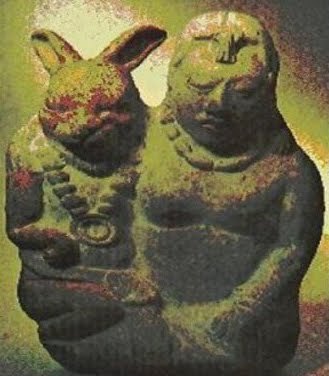
One reader has prepared an essay for me on the matter:
Cary Lenehan is by training a sociologist and mathematician, has designed games, and is by profession currently a truck driver. He aspires to one day be a novelist. He lives in Hobart, Tasmania with his wife Marjorie, an eclectic garden, and a lot of books.
This is what Cary has written for me:
In our multi-cultural world, there is often contention over symbols: who owns them and what they mean. We see one of these clashes at many holiday periods where there are a lot of claims and counterclaims as to whose holiday it is and what that festival means to people.
This is perhaps most contentious at Easter. Unlike Christmas, where there is clear proof that the festival had its date changed from January, Easter is a lot more difficult to pin down. This is a very short look at the subject and only the books I quote are cited here.
Easter's name: One myth current is that there was a goddess that the Festival is named from. However, there is no archaeological evidence of this. This quote from Weiser (p217) is the best summary I can find on the subject:
“The English word Easter and the German ‘Ostern’ come from a common origin (‘Eostur’, ‘Eastur’, ‘Ostara’, ‘Ostar’), which to the Norsemen meant the season of the rising (growing) sun, the season of new birth. The word was used by our ancestors to designate the Feast of New Life in the spring. The same root is found in the name for the place where the sun rises (East, ‘Ost’). The word Easter, then, originally meant the celebration of the spring sun, which had its birth in the East and brought new life upon earth. This symbolism was transferred to the supernatural meaning of our Easter, to the new life of the Risen Christ, the eternal and uncreated Light.
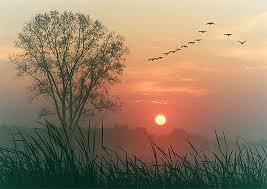
Picture of dawn from Pixel Tango
Based on a passage in the writings of Saint Bede the Venerable (735), the term Easter has often been explained as the name of an Anglo-Saxon goddess (‘Eostre’), though no such goddess is known in the mythologies of any Germanic tribe. Modern research has made it quite clear that Saint Bede erroneously interpreted the name of the season as that of a goddess.”
Prior to this time, the time from the start of Lent was known as Paschal Month in England & the Germanic countries. It culminated in Holy Week (and still does in most cultures).
“The early Church, following apostolic tradition, employed the hallowed term ‘Pasch’ (from Hebrew ‘pesach’, passover) both to Good Friday and Easter Sunday. Thus Good Friday is called the ‘Pasch of Crucifixion’ (‘pascha staurosimon’), Easter the ‘Pasch of Resurrection’ (‘pascha anastasimon’), and the Eastern Church has kept these names up to our day.” (Weiser, p191)
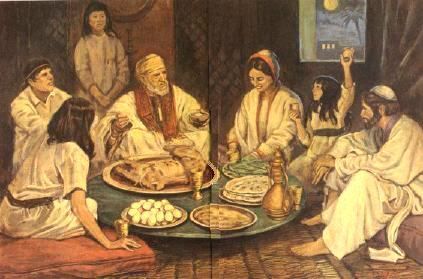
The timing: Easter gains its timing solely from the association with the Hebrew festival of Passover. The Jews left Egypt without much regard to the seasons. By their history their concerns were more immediate (possibly this occurred around 1313BCE). Coincidentally the time that Passover is celebrated is close to the Vernal Equinox (20 March) although the actual start of Passover is very rarely the same date as this event. At this time Egypt had a three-season year of Inundation, Germination and Warmth and no major religious marking of the equinox as they based their calendar on the stars. (Aveni p13). Although its exact meaning is highly contested, the co-incidences between the Book of Exodus and a document called the Ipuwer papyrus, dating from this same period, indicate that they may refer to the same events and the Hebrew account is not lightly dismissed without real contrary evidence.
Eggs: The use of eggs probably was taken from Zoroastrian practice where the egg was used as symbol of rebirth at New Year (the Spring Equinox, which comes soon before the more variable Holy Week).
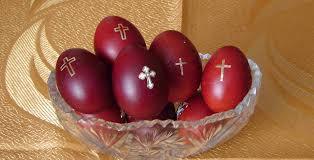
There was no worship of Ishtar in Babylon at this time. In a Christian role they came in as red-dyed eggs representing the blood of Christ for Kyriaki tou Pascha in Mesopotamia by at least the second century. They were not coloured for New Year.
Rabbits: Rabbits were first noted to deliver eggs in the sixteenth century in Alsace and spread from there. It is a late addition to the Easter traditions, but is unlikely to be pagan as, by then there were no pagans left in this part of Europe. Quoting Weiser (at p263) again:
“What seems to be the first mention of the Easter bunny and his eggs is a short admonition in a German book of 1572: ‘Do not worry if the bunny escapes you; should we miss his eggs, then we shall cook the nest.’ ”
In brief, although some of the individual practices (most not covered here) in some countries or even towns have pagan origins; Easter is solely a Christian Festival. It was originally timed in connection with Passover. It has no pagan connection.
References
Aveni, Anthony F (2003) The Book of the Year: A brief History of Seasonal Holidays Oxford University Press, ISBN 0-19-515024-4
Enmarch, Roland (2005) The Dialogue of Ipuwer and the Lord of All, The Griffith Institute, Griffith Institute Publications, Oxford 2005 ISBN0-900416-86-6
Weiser, Francis X S.J. (1952) Handbook of Christian Feasts and Festivals Harcourt, Brace and Company, LOC 58-10908
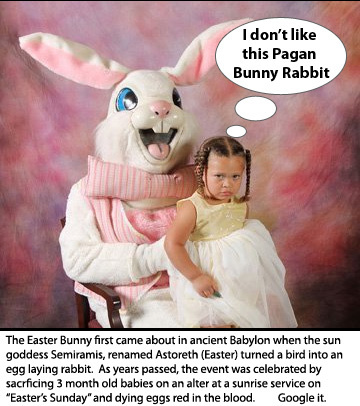
And just to prove ignorance is rife on both sides of the argument, this photo of the 'pagan' Easter bunny comes from the religious site New2Torah - got to love the bit about "sacrficing" (sic) babies ....
So what do you think? Is Carey and Patrick and all the others who disagreed with me right? Or do I have a good pagan leg to stand on?
Looking forward to hearing what you think!
April 4, 2013
WRITING ADVICE: The Narrative Arc
[image error]
Inevitably, I've been asked many questions about my creative process. In my usual fashion, I talk about my narrative arc and how I cannot begin writing a novel until I 'see' the clear shape of my dramatic arc, or, to put it in more simple terms, my story thread with its bright beads of scenes, leading strongly and powerfully to my endpoint, my crisis and resolution.
After a session earlier this week, I was asked to explain more about the narrative arc but a woman who was wanting desperately tow rite but had never heard the term before.
How to explain the narrative arc in a sound bite? Its impossible. So I promised her I would do a blog post to explain it for as best as I can.
Here it is:
[image error]
I call this diagram, with full hubris, the Forsyth Triangle :)
It is based on Freytag’s Triangle, developed by the German dramatist Gustav Freytag who studied Aristotle’s Poetics. Freytag divided a drama into five parts which he named:
Exposition – Rising Action – Climax – Falling Action – Denouement
I have combined his theories with the idea of a three-act structure often used by playwrights and screenwriters.
Some definitions:
• Exposition – background information – characters, scene, & situation – a scene that shows the normal life of the protagonist
• Inciting Incident – the catalyst that begins the major conflict – a problem or complication to be solved – the point at which normal life is changed
• Rising Action – a series of conflicts and crises – obstacles to overcome, ordeals to undergo, lessons to be learnt, revelations to be understood
• Crisis – a crucial or decisive moment in the story that has a powerful effect on the protagonist – a turning point
• Midpoint Reversal - a pivotal moment, often set at the middle of the story, where it seems all is lost and the hero cannot go on – it often marks a movement from one place to another, whether physical, spiritual or emotional
• Climax – (or final crisis) - the turning point of the action, when tension reaches its height. The point in which the hero must not only face – and defeat – his enemy, but also his greatest fear
• Resolution – the final stage, where questions are answered and problems solved
• Falling Action - the action following the climax that moves the story towards its end – it is usually much shorter than the previous series of events
• Denouement – comes from the old French, and means to ‘untie the knot’. The final scene when all is well – ‘the feast scene’
Understanding the basic narrative arc of a story can help you make sure your story does not sag in the middle, fizzle out at the end or drone on for too long at the beginning (the most common mistakes I see in manuscripts!)
Some other illustrations of narrative arcs:
[image error]
[image error]



